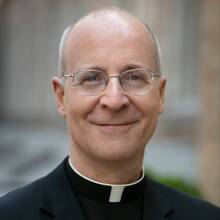![]() Check out Jeffrey Eugenides engaging new short story, "Asleep in the Lord," in this week’s New Yorker. (Or don’t check it out, since it’s hidden behind a subscriber wall: just go out and buy the mag.) It’s the story of Mitchell, a young man who volunteers in Calcutta with the Missionaries of Charity, when Mother Teresa is still in charge. (I was going to say “large and in charge,” but Eugenides aptly describes her as “impossibly tiny, no bigger than a twelve-year-old.") As someone who worked with the MC’s in Jamaica in the late 1980s, when his story takes place, I can attest to his getting many of the details right: the sights, the sounds and, especially, the smells. His description of bathing old men (one of my own tasks) offered alarming verisimilitude. As did his description of Mitchell's initial reluctance: "[B]y the end of the second week he had become uncomfortably aware that he was performing the simplest, least demanding tasks at the Home. He hadn't given anyone a bath, for instance. Bathing the patients was the main service that the foreign volunteers provided....Day after day, Mitchell managed not to help with this. He was scared of what the patients' naked bodies looked like, of the diseases or wounds that might lie under their robes, and he was afraid of their bodily effluvia, of his hands touching their urine or excrement." That could have come from my journals. Eventually I overcame my skittishness. As for Mitchell, well, you'll see.
Check out Jeffrey Eugenides engaging new short story, "Asleep in the Lord," in this week’s New Yorker. (Or don’t check it out, since it’s hidden behind a subscriber wall: just go out and buy the mag.) It’s the story of Mitchell, a young man who volunteers in Calcutta with the Missionaries of Charity, when Mother Teresa is still in charge. (I was going to say “large and in charge,” but Eugenides aptly describes her as “impossibly tiny, no bigger than a twelve-year-old.") As someone who worked with the MC’s in Jamaica in the late 1980s, when his story takes place, I can attest to his getting many of the details right: the sights, the sounds and, especially, the smells. His description of bathing old men (one of my own tasks) offered alarming verisimilitude. As did his description of Mitchell's initial reluctance: "[B]y the end of the second week he had become uncomfortably aware that he was performing the simplest, least demanding tasks at the Home. He hadn't given anyone a bath, for instance. Bathing the patients was the main service that the foreign volunteers provided....Day after day, Mitchell managed not to help with this. He was scared of what the patients' naked bodies looked like, of the diseases or wounds that might lie under their robes, and he was afraid of their bodily effluvia, of his hands touching their urine or excrement." That could have come from my journals. Eventually I overcame my skittishness. As for Mitchell, well, you'll see.
Mitchell’s spiritual journey is well told, from his confusing (to him) attraction to the "Jesus prayer," to his push-me/pull-you relationship with religion (Thomas Merton makes a cameo), to his struggles with confronting the physicality of the work, to his encounters with other spiritual and not-so-spiritual seekers (whose motives seem, to Mitchell at least, slightly suspicious) and especially, to the surprising conclusion of the story (no spoiler alerts), which seemed entirely human and eminently believable. Buy a copy. See what you think.








